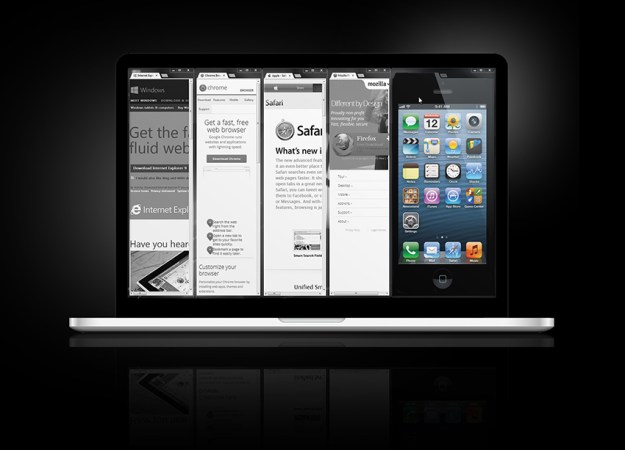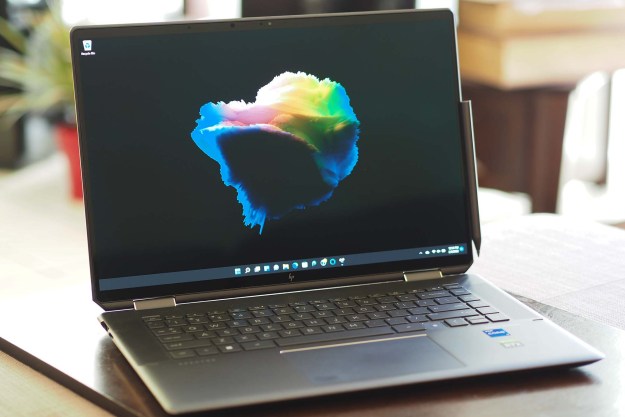
The Web as we know it may have been born, conceived and improved on computers, but as it turns out, those keyboarded beasts no longer have much of a claim to it. According to a a recent report by analyst Mary Meeker, mobile devices running iOS and Android now account for 45 percent of browsing, compared to just 35 percent for Windows machines.

Windows hasn’t dipped so low since about 1985. What’s more, Android and iOS have essentially achieved their share in just five years, and by all reckonings are still in the early stages of their growth.
What’s the message? Mobile is huge, it’s going to get tremendously larger, and will soon become the primary way most people experience the Internet. How did this shift happen, and what does it mean now that more people are accessing the Web through tablets and smartphones than laptops and desktops?
Mobile Internet is becoming the Internet
Smartphones and tablets are obviously the hottest technology products right now, but figures about how significant they have become are daunting. Meeker forecasts the worldwide number of smartphone and tablet users should overtake the worldwide number of PC users next year. That means around the world, more people’s experience of “computing” and Internet technology will come from mobile devices than via traditional desktop or notebook PCs. If forecasts bear out, this shift will not only continue, but accelerate. Based on data from Morgan Stanley and a few assumptions about device lifetime, Meeker estimates roughly 2.9 billion people around the world will be using smartphones and tablets by 2015.
Meeker’s forecast for accelerating adoption seems to be bearing some fruit. Back in May, she found that about 10 percent of global Web traffic came from mobile devices. In this new update, the level has jumped to 13 percent — and that’s just over a period of a few months. Meeker also notes a Nielsen report that found amongst children aged 6 to 12, 43 percent want an iPad and 36 percent want an iPad mini. (The only non-Apple product desired by more in that age group was the Nintendo Wii U; some 29 percent indicated they wanted a tablet “other than an iPad.”) In other words, at least in the United States, children’s formative experiences with technology are increasingly smartphones and tablets, not computers.

It is worth noting that those global figures gloss over a lot of regional variation — and those differences can be significant. For instance, in the United States about 78 percent of the population has access to the Internet, putting the U.S. way out in front of most other nations. However, while only about 11 percent of India’s population has access to the Internet, mobile Internet traffic has already eclipsed Internet traffic generated by traditional computers in India. And where in the United States roughly half mobile users are on smartphones, in India that figure is just four percent. In other words, emerging economies like India, China, Brazil, and Indonesia are leading shift towards a mobile-centric Internet.

How will the Internet change?

Is it really a big deal if most people’s experience of the Internet and the Web shifts to mobile devices? After all, isn’t much of the promise of the the Internet rooted in being able to access it from anywhere – from any device?
Well, yes. However, Meeker is essentially arguing that the technology industry’s rapid shift towards mobile represents a fundamental shift in the way most of humanity will consider the Internet. Mobile technologies and applications will quickly trump what until now have been mainstream Internet experiences. Mobile versions of innovative technologies – like Siri – are already becoming premiere products and experiences, rather than also-rans and follow-alongs.
What will that mean for the mainstream Internet?
Sites will look more like apps
As mobile devices take over, the use of today’s desktop browsers like Internet Explorer, Chrome, Firefox, and Safari will decline. To be sure, mobile browsers are already very capable and will increasingly adopt HTML5 and leading-edge Web technologies. But, fundamentally, mobile devices will nearly always have less screen real estate than traditional desktops, and mobile users will not have the fine control of a mouse and keyboard. That means for sites to be successful on a mobile-centric Internet, they’re going to need to function more like mobile apps and less like collections of links.
Apps may rule
Right now, native apps for smartphones and tablets almost always trump websites designed for mobile devices because they can tap into devices’ native capabilities for a more responsive and seamless experience. (A colleague recently compared the experience of using a HTML5 Web app on a mobile device to using a Java app on a PC: It usually works, but it’s awkward at best.) This may not always be true — most experts agree HTML5 is eventually the way of the future. But it doesn’t look like the HTML5 future is going to arrive before smartphones and tablets eclipse traditional PCs. If HTML5 lags more than a year or so behind mobile devices emerging as the mainstream way of accessing the Internet, traditional websites will be second-class citizens, as Internet developers focus first and primarily on mobile experiences. This is already the status quo in social gaming: Think about where hits like Angry Birds and Words with Friends launched. Some services won’t be available at all to traditional PCs — they won’t be worth developers’ time.
Know thy user
Presenting less information at once means Web sites and publishers will no longer be able to take a shotgun approach: throwing everything new at visitors and hoping something sticks. Smaller screens and lower information density means sites will tap into user preferences and profiles to customize the information they present. Increasingly, the Internet will become unusable unless sites believe they know who you are. Some services will handle these tasks themselves, but the most likely contenders for supplying digital identity credentials are Facebook, Google, Amazon, Apple, Twitter, and mobile carriers.
Sharing by default
Facebook’s Mark Zuckerberg once opined that privacy is not a “social norm.” In a mobile-focused Internet, that might be better expressed as “sharing is the social norm.” One consequence of the mobile Internet is that very few people are anonymous: Virtually every mobile device can be definitively associated with a single person (or small group of people). Defaults to share information and experiences with social circles and followers will be increasingly common, along with increasing reliance on disclosure of personal information (like location, status, and activities, and social connections) to drive key functionality. As the Internet re-orients around mobile, opting out of sharing will increasingly mean opting out of the Internet.
Emphasis on destination, not navigation
Smaller screens, touch interfaces, and app-like designs also mean that the traditional understanding of the Web as an impossibly vast collection of interlinked sites and documents will start to break down. Web browsers were designed to enable users to jump quickly around the world from site to site and page to page; however, the mobile Internet experience wants to be more of a seamless application experience, not hopping around the Internet willy-nilly.
URLs are not going to die: People will still send links to their friends and Web search will remain most users primary means of finding information online. But Internet-based sites and services will increasingly function as silos of content and functionality reluctant to link out to other sites or drive traffic (and potential advertising revenue) elsewhere. These have long been factors in many sites’ designs (including Digital Trends), but mobile devices amplify these considerations by making traditional Web navigation awkward and difficult.
Shedding weight

Meeker’s presentation makes the case that the increasing ubiquity of mobile technology – and the panoply of devices and services it can replace – represents a shift towards an “asset-light” rather than an “asset-heavy” lifestyle. As people rely on mobile, cloud, and broadband services, the necessity to do things like commute, store large volumes of records or media, or patronize physical businesses will decline. The need to own a vehicle, for instance, declines with access to mobile computing and telecommuting. Maybe you can get by with no car or pick one up from time to time through ZipCar. Businesses won’t need to save years of invoices, statements, and paperwork in file boxes and storage facilities – cloud storage can come their rescue. Banks will become purely virtual institutions consumers deal with online via their phones. Distance learning and collaborative tools will let students take their coursework with them anywhere — and eliminate the need to worry about reselling enormous textbooks.
Going mobile
The future isn’t written in stone. Although Mary Meeker presents a compelling case for mobile rapidly become the dominant experience in personal computing and technology, forecasting the future is a notoriously tricky business. The world economy could take another punch to the gut; Microsoft might be right about Windows 8 and start a second PC revolution; Facebook might push sharing one step too far. Heck, five people in a garage somewhere might have just soldered together the components that’ll turn the entire personal technology industry on its head. We just don’t know. Meeker herself points out that consumers’ unsteady financial footing and significant debt levels cast doubt on technological innovation. After all, it doesn’t matter how cool the toys are if nobody can afford them.
But the trend seems clear: For the vast majority of consumers worldwide, the primary computing and online experience will be on mobile devices. That means nearly every service, business, and (really) person who wants to use the Internet will be thinking mobile first and PC second, if they think about PCs at all.
Mary Meeker’s 2012 Internet Trends report slides:


